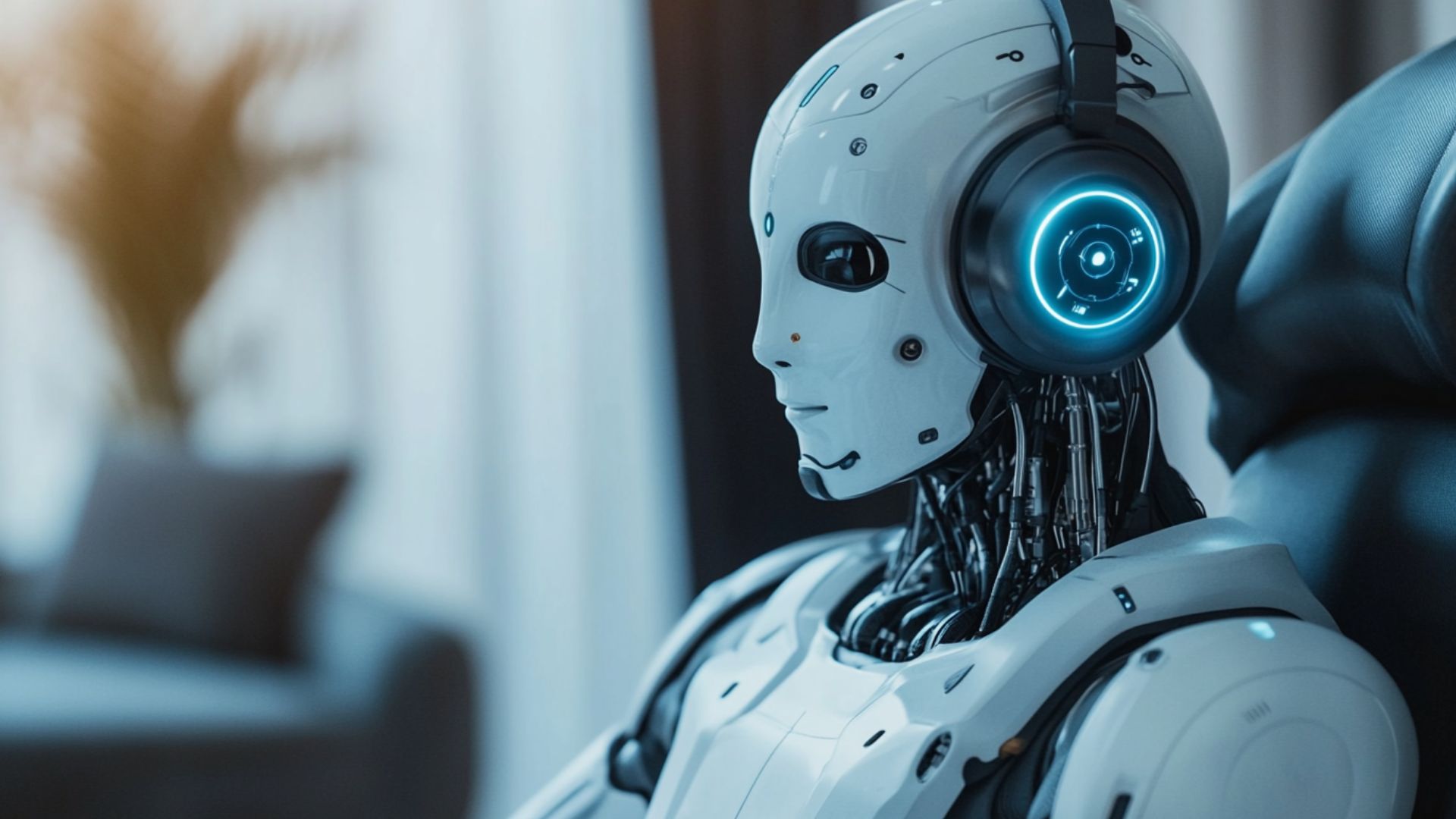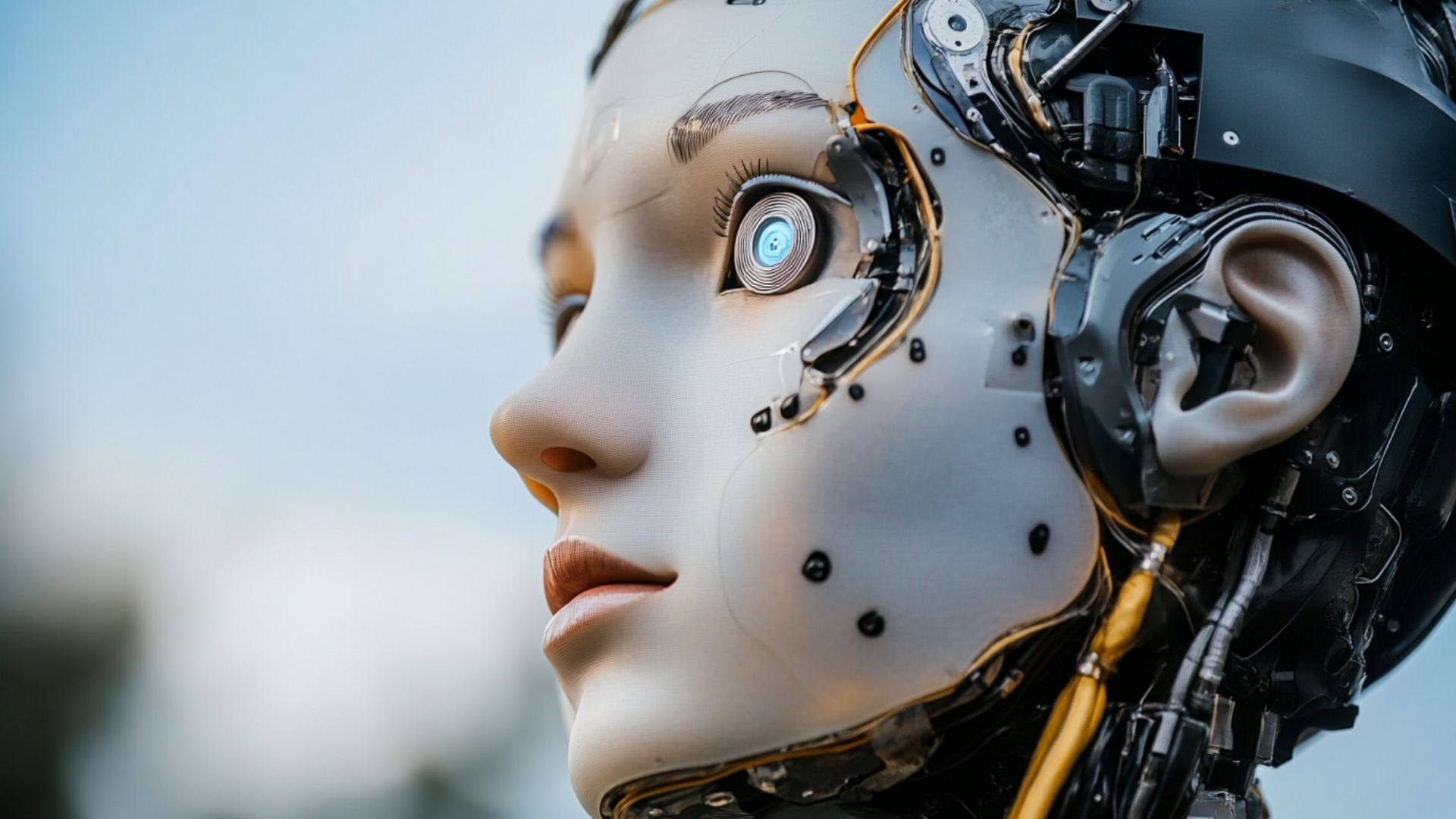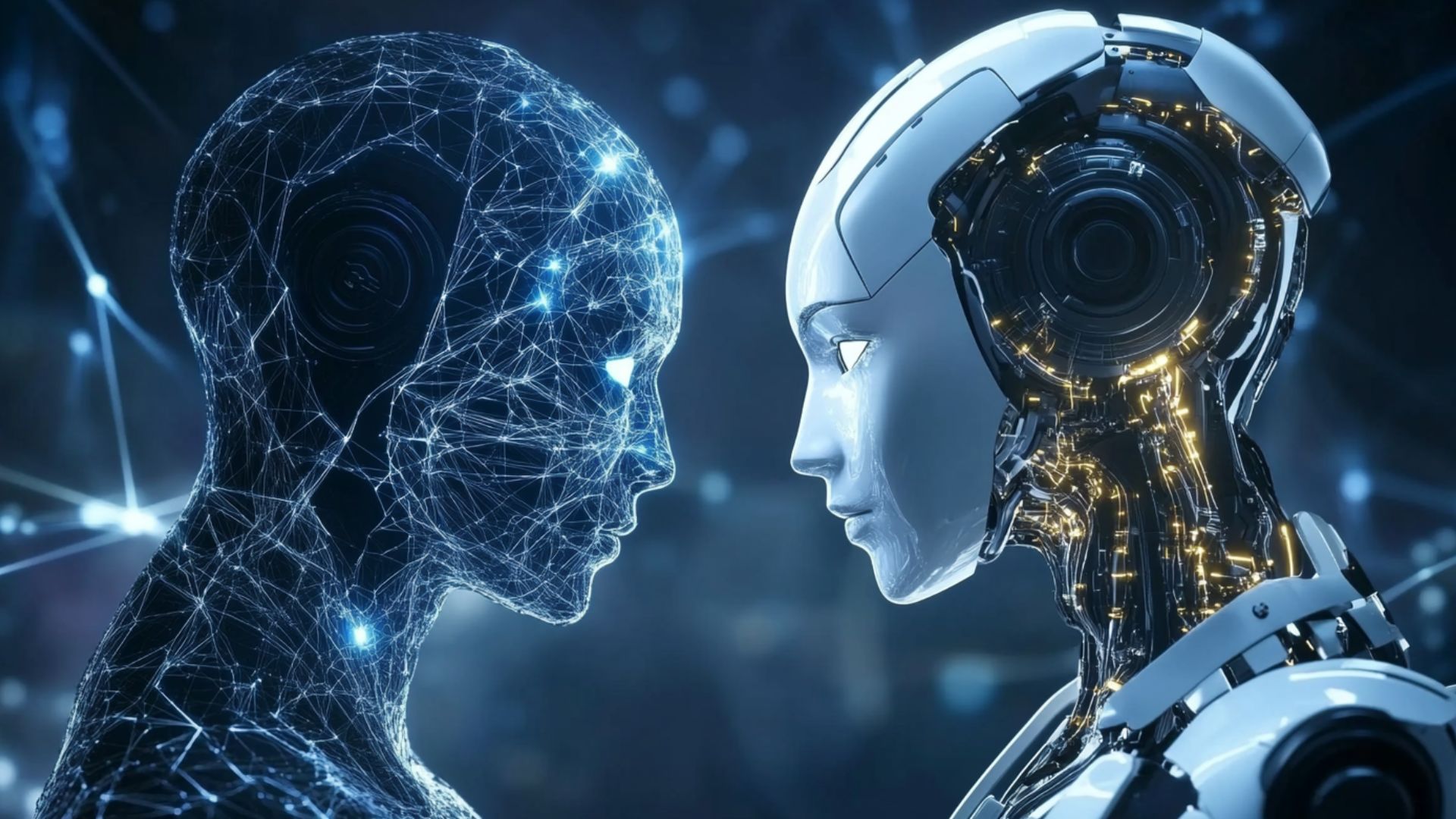Artificial Intelligence in the Electrical Industry

The electrical industry is undergoing revolutionary change in an era of rapid technological advancement. Innovation is affecting all aspects of the industry, from design to operation. Most importantly, integrating AI electric is opening up unprecedented development opportunities.
The emergence of the electrician robot raises many questions about the profession's future. However, reality shows that technology is not seeking to replace humans. Rather, on the contrary, they create new opportunities for collaboration. Electric AI helps professionals analyze complex systems, predict malfunctions, and make more accurate decisions.
Today, artificial intelligence transforms traditional approaches to energy management, grid optimization, and maintenance. Smart systems collect and analyze vast amounts of data, enabling them to prevent accidents before they happen and dramatically improve the efficiency of the entire industry.
In this article, we look at how technological advances are changing the electrical industry's face. You will learn why the symbiosis of human expertise and artificial intelligence is becoming the key to success in the new technological era.
The Role of AI in Modernizing the Electrical Industry
So, as we mentioned above, the electrical industry is undergoing an unprecedented transformation. This is happening thanks to the integration of artificial intelligence. Just as visual electric AI is revolutionizing diagnostic and monitoring processes, machine learning technologies are opening new horizons for the industry. Rogers Electric jobs demonstrate how introducing robotic electricians can dramatically improve the efficiency and safety of manufacturing processes.
Key benefits of implementing AI in the electrical industry:
- Automating monitoring processes. Modern AI systems can monitor the condition of equipment around the clock. They analyze thousands of parameters simultaneously. It makes it possible to identify potential problems long before they occur.
- Optimization of energy consumption. Machine learning algorithms analyze energy consumption patterns. They automatically adjust system settings to maximize efficiency. This results in significant resource savings and lower operating costs.
- Improved safety. Computer vision systems and AI-driven sensors provide continuous monitoring of critical components. It significantly reduces the risk of accidents and improves overall production safety.
- Predictive analytics. Artificial intelligence can predict potential malfunctions. It is based on analyzing historical data and current equipment performance. It allows maintenance to be scheduled most efficiently.
- Intelligent grid management. AI helps optimize the distribution of energy in networks. It automatically balances loads and minimizes transmission losses.
In the context of sustainable development, the question arises whether electricians will be automated. AI technologies are key to achieving carbon footprint reduction and energy efficiency goals. Smart grids based on AI not only provide a more reliable power supply. They contribute to the development of green energy.
AI in Predictive Maintenance and Asset Management
Key benefits of predictive maintenance based on general electric AI:
- Early fault detection. Artificial intelligence analyzes data from thousands of sensors. It detects the slightest abnormalities in equipment operation. It prevents up to 85% of potential failures at an early stage.
- Resource optimization. AI systems help you schedule maintenance when it's needed. It reduces costs by 30-40% compared to traditional approaches.
- Increased service life. With continuous monitoring and timely maintenance, equipment life is extended by an average of 20-25%. It significantly reduces capital expenditures.
- Continuous monitoring. Intelligent systems monitor the status of transformers, circuit breakers, and other critical components around the clock. It ensures their uninterrupted operation.
- Automation of routine inspections. AI takes over the tasks of regular equipment diagnostics. It allows staff to focus on more complex and strategic tasks.
In the next section, we'll look at how these technologies help optimize energy consumption and reduce operating costs.
AI for Energy Consumption Optimization
In the growing AI data center electric demand era, energy optimization is becoming a critical challenge. Electrical AI opens up new opportunities for efficient energy management.
Industrial applications:
- Intelligent load balancing. AI algorithms analyze energy consumption patterns in real-time. They automatically redistribute the load to maximize efficiency. It reduces peak consumption by 15-20% and optimizes equipment performance.
- Consumption Prediction. Artificial intelligence systems can predict periods of high load with up to 95% accuracy. It allows you to plan the distribution of energy resources and avoid network overloads.
- Energy management automation. AI monitors the operation of all energy-consuming systems, automatically shutting down unused equipment and optimizing operating modes based on current needs.
Domestic applications:
- Smart lighting systems. Artificial intelligence analyzes room usage patterns and natural light. It automatically adjusts light brightness and temperature to maximize comfort and energy efficiency.
- Optimizing household appliances. AI learns to understand user habits and automatically adjusts appliances to operate in the most energy-efficient mode. It can reduce energy consumption by 25-30%.
- Intelligent heating and air conditioning. AI-based systems predict weather conditions and adapt the operation of climate control equipment. It ensures an optimal microclimate with minimal energy consumption.
Benefits of implementation:
- Cost-effectiveness. Implementing AI electric can reduce energy costs by 30-40% in the industrial sector and up to 25% in the residential sector.
- Environmental sustainability. Optimizing energy consumption has a direct impact on reducing carbon footprint. It contributes to the achievement of sustainable development goals.
- Improved reliability. Intelligent systems help prevent network overloads. It will also help ensure a more stable energy supply.
The future of energy consumption lies with intelligent systems. And they do not only optimize the use of resources. They create new standards for energy efficiency in the industrial and residential sectors.
Enhancing Safety and Efficiency with AI

In today's electrical industry, safety and efficiency are becoming key priorities. It is where electrical AI plays a decisive role. Innovative solutions, including the electrician robot, are fundamentally changing the approach to safety in production.
Key applications of AI in safety:
- Continuous monitoring. Intelligent systems analyze the state of electrical networks around the clock. They detect the slightest deviations from the norm. Machine learning algorithms are capable of processing thousands of parameters simultaneously. It allows the detection of potential problems at the earliest stages.
- Accident prevention. AI analyzes historical data and current performance to create risk prediction models. It can prevent up to 90% of potential accidents before they occur.
- Robotic inspection. Autonomous robots perform hazardous tasks such as inspecting high-voltage equipment, working in hard-to-reach areas, and making repairs in high-risk environments.
Innovative solutions for increased efficiency:
- Intelligent diagnostics. Computer vision and thermal analysis systems allow faults to be detected without physical contact with the equipment. It significantly increases the safety of maintenance personnel.
- Workflow optimization. The robot electricians help plan work processes considering all risk factors. They automatically create optimal schedules for equipment maintenance and repair.
- Virtual assistants. Specialized AI systems give technicians instant access to documentation and step-by-step instructions for complex jobs.
Impact on network management:
- Automatic load balancing. AI optimizes power distribution in real-time. It prevents congestion and minimizes transmission losses.
- Intelligent routing. In case of failures, AI systems instantly reroute power flows. It ensures uninterrupted power supply to critical facilities.
- Predictive analytics. Machine learning algorithms predict possible network failures. They automatically initiate preventive measures.
When the question arises, will AI replace electricians? The answer will delight you. AI will not replace humans, but on the contrary will help them. Implementation results:
- Improved safety. The number of accidents at work is reduced by 60-70%. All this is due to the automation of dangerous operations.
- Economic efficiency. Costs for elimination of accidents are reduced by 40-50% due to preventive maintenance.
- System reliability. Unplanned downtime is reduced by 80% due to timely detection and elimination of potential problems.
Introducing AI into the safety and efficiency of electrical systems is not just a technological improvement. It's a fundamental change in the way work processes are organized. Thanks to these innovations, the industry is becoming safer, more efficient, and more resilient to today's various challenges.
AI in Smart Grids and Renewable Energy
Today's electrical industry overview shows the rapid evolution of energy systems. While many question the replacement of AI, practice shows that the technology is becoming an enabler of more efficient energy grids.
The main applications of AI in smart grids:
- Dynamic energy management. Electrical AI analyzes data from thousands of sensors in real-time. It optimizes the distribution of energy between consumers. It can reduce transmission losses by 25-30% and improve overall grid efficiency by 15-20%.
- Integration of renewable sources. Electric support systems successfully solve the problem of unstable generation from solar and wind power plants. They predict power generation with an accuracy of up to 95% and automatically balance the load in the grid.
- Accident Prevention. Machine learning algorithms identify potential problems in the grid long before they occur. It can prevent up to 80% of potential accidents.
Practical application in renewable energy:
- Optimizing the performance of wind turbines. Although it is often asked whether AI will replace electricians, practice shows that technical electricians and intelligent systems effectively complement each other. AI analyzes weather conditions and automatically adjusts the position of turbine blades, increasing generation efficiency by 10-15%.
- Solar panel monitoring. Computer vision systems monitor the condition of solar panels, detecting contamination and damage. It helps maintain maximum generation efficiency.
- Consumption forecasting. AI analyzes historical data and current trends. It creates accurate energy consumption forecasts, allowing for optimal grid load planning.
Implementation results:
- Increased stability. Intelligent systems ensure uninterrupted power supply even when there are significant renewable generation fluctuations.
- Cost-effectiveness. Implementing AI reduces operating costs by 30-40% and increases equipment service life by 20-25%.
- Environmental effect. The optimization of power grid operations contributes to reducing carbon footprints and making more efficient use of renewable energy sources.
The development of smart grids using AI is a key step towards creating a sustainable and efficient future energy system.
Challenges of Implementing AI in the Electrical Industry

Even though visual electric AI opens new opportunities for the industry, the implementation process involves several significant challenges. Let's look at the main challenges and ways to address them.
Financial barriers:
- High initial investment. Implementing AI systems requires significant financial investments, not only in the equipment itself. It is also essential to create the necessary infrastructure. Costs at the initial stage can reach several million dollars.
- Uncertain ROI. Electric support shows high efficiency. However, payback periods can vary from 2 to 5 years, creating additional business risks.
Technological challenges:
- Data integration. Combining disparate systems and data formats requires complex integration solutions. Tech electric often faces the problem of incompatibility between old and new equipment.
- Cybersecurity. The introduction of AI increases the surface of potential cyberattacks. Protecting critical infrastructure requires ongoing investment in security systems.
Human factors:
- Personnel adaptation. The question, "Will electricians be replaced by AI?" creates tension in the workforce. Employee retraining and development programs need to be developed.
- Cultural Change. The transition to digital technologies requires significant changes in corporate culture and decision-making processes.
Regulatory aspects:
- Compliance. The need to comply with multiple regulatory requirements complicates the innovation process.
- Coordination with regulators. Requires constant interaction with regulators to develop new standards and regulations.
Solution paths:
- Establish industry consortia to jointly fund development and share risks.
- Develop phased implementation plans with clear performance metrics.
- Investing in training and staff development programs.
- Creating specialized cybersecurity competency centers.
- Developing public-private partnerships to support innovation.
Successfully overcoming these challenges requires a systematic approach and close cooperation of all industry participants. It is the only way to ensure an effective transition to new technologies while maintaining the reliability and security of electric power systems.
The Future of AI in the Electrical Industry
The electrical industry is on the cusp of revolutionary change. The development of electrical AI and the growing AI data center electrical demand are shaping new trends in the industry.
Key areas of development:
- Autonomous power grids. AI will manage fully autonomous microgrids capable of balancing energy generation and consumption, adapting to changing conditions.
- Smart energy storage. Artificial intelligence will optimize the performance of energy storage systems. It will increase efficiency by 40-50% compared to traditional approaches.
- Personalized energy consumption. AI will create individual consumption profiles for each user. It will automatically optimize energy consumption based on their habits and preferences.
The development of AI technologies in the power industry will lead to a fully integrated ecosystem. Energy production, distribution, and consumption will be maximized efficiently and environmentally friendly. By 2030, AI implementation is expected to reduce grid losses by 30%, reduce the industry's carbon footprint by 25%, and ensure uninterrupted power supply even in the most remote regions.
The power industry's future is a symbiosis of human expertise and artificial intelligence, where technology creates a more sustainable and efficient world.


